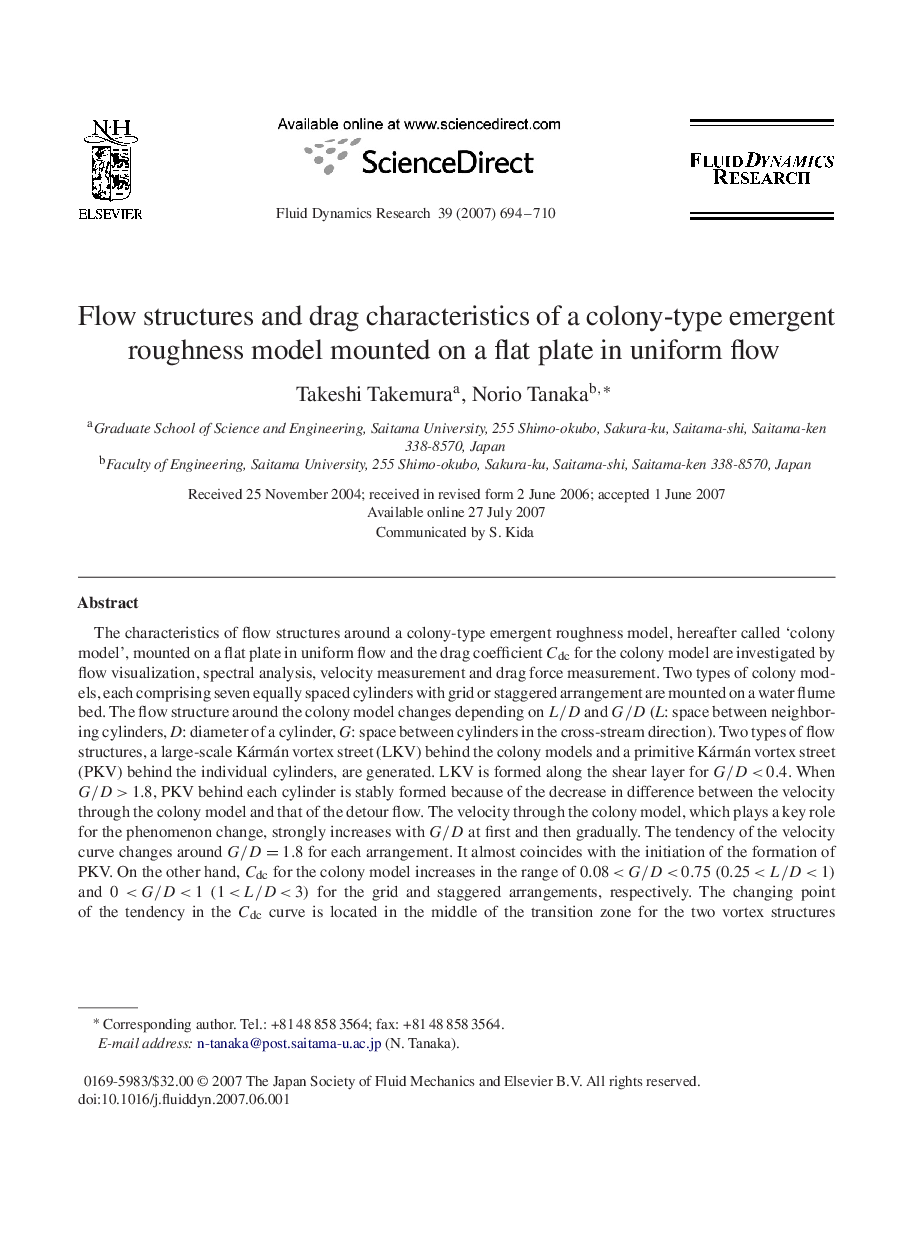| Article ID | Journal | Published Year | Pages | File Type |
|---|---|---|---|---|
| 774641 | Fluid Dynamics Research | 2007 | 17 Pages |
Abstract
The characteristics of flow structures around a colony-type emergent roughness model, hereafter called 'colony model', mounted on a flat plate in uniform flow and the drag coefficient Cdc for the colony model are investigated by flow visualization, spectral analysis, velocity measurement and drag force measurement. Two types of colony models, each comprising seven equally spaced cylinders with grid or staggered arrangement are mounted on a water flume bed. The flow structure around the colony model changes depending on L/D and G/D (L: space between neighboring cylinders, D: diameter of a cylinder, G: space between cylinders in the cross-stream direction). Two types of flow structures, a large-scale Kármán vortex street (LKV) behind the colony models and a primitive Kármán vortex street (PKV) behind the individual cylinders, are generated. LKV is formed along the shear layer for G/D<0.4. When G/D>1.8, PKV behind each cylinder is stably formed because of the decrease in difference between the velocity through the colony model and that of the detour flow. The velocity through the colony model, which plays a key role for the phenomenon change, strongly increases with G/D at first and then gradually. The tendency of the velocity curve changes around G/D=1.8 for each arrangement. It almost coincides with the initiation of the formation of PKV. On the other hand, Cdc for the colony model increases in the range of 0.081.8.
Related Topics
Physical Sciences and Engineering
Engineering
Mechanical Engineering
Authors
Takeshi Takemura, Norio Tanaka,
